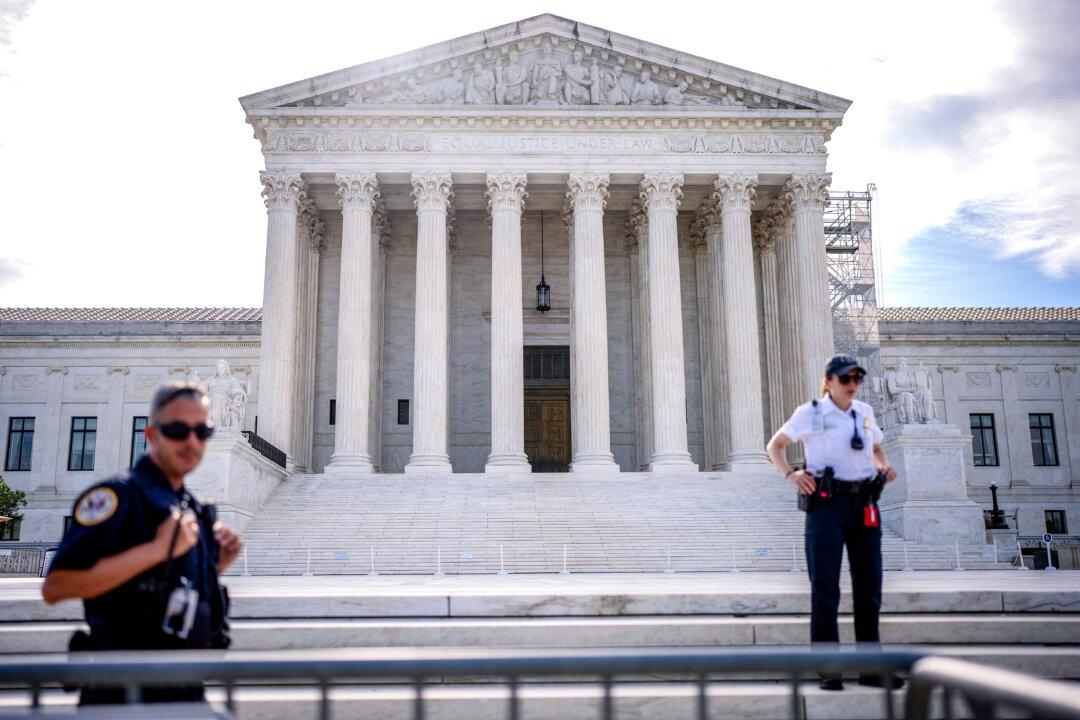The U.S. military announced on Jan. 17 that it launched another barrage of missiles against the Houthis in Yemen following a recent spate of attacks targeting U.S. warships and civilian vessels.
U.S. military “forces conducted strikes on 14 Iran-backed Houthi missiles that were loaded to be fired in Houthi controlled areas in Yemen,” the U.S. Central Command said in a statement late on Jan. 17. “These missiles on launch rails presented an imminent threat to merchant vessels and U.S. Navy ships in the region and could have been fired at any time, prompting U.S. forces to exercise their inherent right and obligation to defend themselves.”
The strikes come as the U.S. State Department placed the Houthis back on its list of designated foreign terrorist organizations, after the Shia Islamist group was taken off after President Joe Biden took over in early 2021. Placing the group on the list is designed to sever it from its sources of financing and cut it off from the global banking system.
“The actions by the Iranian-backed Houthi terrorists continue to endanger international mariners and disrupt the commercial shipping lanes in the Southern Red Sea and adjacent waterways,” Gen. Michael Erik Kurilla, commander of the U.S. Central Command, said in the statement. “We will continue to take actions to protect the lives of innocent mariners and we will always protect our people.”
Despite the sanctions and military strikes, including a large-scale operation carried out on Jan. 12 by U.S. and British warships and warplanes that hit more than 60 targets across Yemen, the Houthis are continuing their harassment campaign of commercial and military ships.
The latest incident occurred on Jan. 17 when a one-way attack drone was launched from a Houthi-controlled area in Yemen and struck the Marshall Islands-flagged, U.S.-owned and -operated M/V Genco Picardy in the Gulf of Aden.
On Jan. 17, Pentagon press secretary Maj. Gen. Patrick Ryder said the United States would continue to take military action to prevent further attacks.
“They are exploiting this situation to conduct attacks against the ships and vessels from more than 50 countries ... around the world. And so we’re going to continue to work with our partners in the region to prevent those attacks or deter those attacks in the future,” Gen. Ryder said.
In recent days, the Houthis fired an anti-ship cruise missile toward a U.S. Navy destroyer, but the ship shot it down. The Houthis then struck a U.S.-owned ship in the Gulf of Aden on Jan. 15 and a Malta-flagged bulk carrier in the Red Sea on Jan. 16.
Terrorist Designation
On Jan. 17, the U.S. government designated the Houthis as a “specially designated global terrorist” organization, which will come into force in February.The move is meant to “impede terrorist funding to the Houthis, further restrict their access to financial markets, and hold them accountable for their actions,” national security adviser Jake Sullivan said in a statement.
“If the Houthis cease their attacks in the Red Sea and Gulf of Aden,” Mr. Sullivan stated, “the United States will immediately reevaluate this designation.”
The group’s attacks targeting ships in the Red Sea since the start of the Israel–Hamas war are “the textbook definition of terrorism,” the White House stated. They have “endangered U.S. personnel, civilian mariners, and our partners, jeopardized global trade, and threatened freedom of navigation.”
Iranian Foreign Minister Hossein Amir-Abdollahian, whose country backs Hamas in the Israel conflict, said the war needs to end before the threat to global shipping is removed.
“The security of the Red Sea is tied to the developments in Gaza, and everyone will suffer if Israel’s crimes in Gaza do not stop ... all the [resistance] fronts will remain active,” Mr. Amir-Abdollahian said at the World Economic Forum in Davos, Switzerland, according to Reuters.
U.S. officials have long said that Iran is a military and financial backer of both the Houthis and Hamas, as well as Hezbollah. Both Hamas and Hezbollah are also on the U.S. designated terrorist list.







